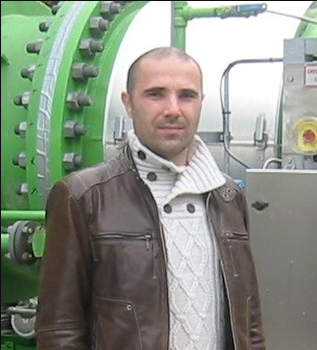Development and Utilization in Geothermal Energy
A special issue of Energies (ISSN 1996-1073). This special issue belongs to the section "H: Geo-Energy".
Deadline for manuscript submissions: 31 May 2024 | Viewed by 2148
Special Issue Editors
Interests: geothermal energy; ground source heat pumps; thermodynamics; energy and oil & gas; reservoir engineering
Special Issues, Collections and Topics in MDPI journals
Interests: geothermal energy; ground source heat pumps; thermodynamics; energy and oil & gas; reservoir engineering
Special Issues, Collections and Topics in MDPI journals
Special Issue Information
Dear Colleagues,
With the rise of the low-carbon energy demand geothermal energy exploitation is gaining more visibility as a sustainable, renewable and clean energy resource. Along with project development from classic hydrothermal systems, increased interest is seen in developing projects which use existing oil & gas well assets as well as the development of enhanced geothermal systems. Deep geothermal energy resources provide power as well as direct thermal applications. Likewise, increase of ground and groundwater source heat pumps is seen when it comes to exploiting shallow geothermal resources, adding to the increase of the share in the thermal applications, especially in domestic heating and cooling. Both deep and shallow geothermal systems can provide safe, reliable and constant energy product. However, the share of this resource is increasing rather slowly in the energy mix. Therefore, it is beneficial to highlight current research in the field of technology development , geothermal exploitation as well as utilization of both deep and shallow geothermal resources, which this Special Issue aims to publish.
Dr. Marija Macenić
Prof. Dr. Tomislav Kurevija
Guest Editors
Manuscript Submission Information
Manuscripts should be submitted online at www.mdpi.com by registering and logging in to this website. Once you are registered, click here to go to the submission form. Manuscripts can be submitted until the deadline. All submissions that pass pre-check are peer-reviewed. Accepted papers will be published continuously in the journal (as soon as accepted) and will be listed together on the special issue website. Research articles, review articles as well as short communications are invited. For planned papers, a title and short abstract (about 100 words) can be sent to the Editorial Office for announcement on this website.
Submitted manuscripts should not have been published previously, nor be under consideration for publication elsewhere (except conference proceedings papers). All manuscripts are thoroughly refereed through a single-blind peer-review process. A guide for authors and other relevant information for submission of manuscripts is available on the Instructions for Authors page. Energies is an international peer-reviewed open access semimonthly journal published by MDPI.
Please visit the Instructions for Authors page before submitting a manuscript. The Article Processing Charge (APC) for publication in this open access journal is 2600 CHF (Swiss Francs). Submitted papers should be well formatted and use good English. Authors may use MDPI's English editing service prior to publication or during author revisions.
Keywords
- geothermal energy
- heat transfer
- reservoir engineering
- geothermal power generation
- geothermal direct heat application
- cogeneration
- oil & gas fields revitalization
- enhanced geothermal systems
- borehole heat exchangers
- heat pumps.






